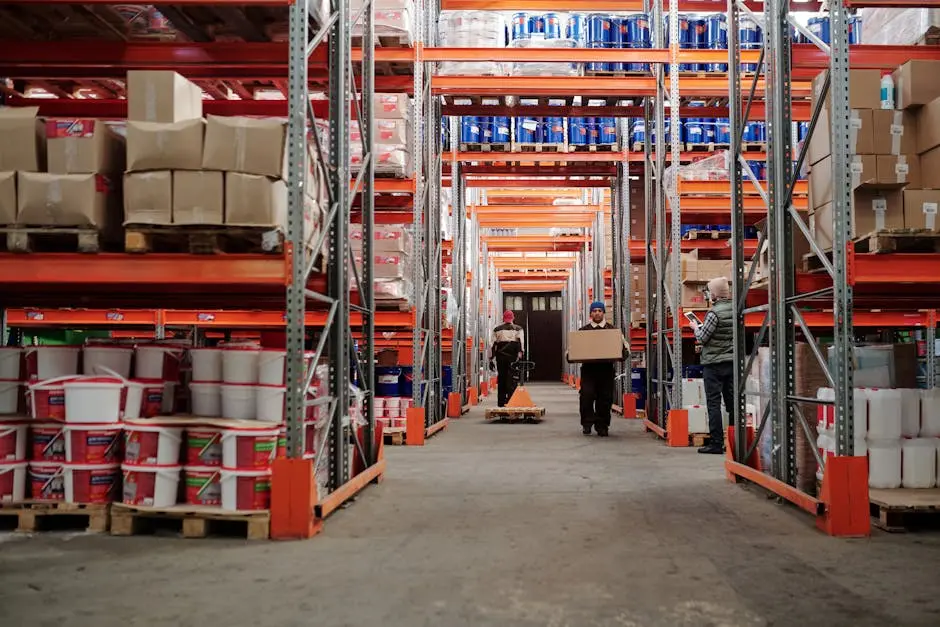What Is a Fulfillment Center and How Does It Work?
A fulfillment center plays a vital role in the logistics of e-commerce, managing the storage, packing, and shipping processes. If you’re curious about what a fulfillment center is and how it operates, you’ve come to the right place. This guide will break everything down in a friendly and straightforward manner, making it easy to grasp the essentials.

What Is a Fulfillment Center?
A fulfillment center is a specialized facility designed to help businesses manage their inventory and order processing. This includes storing products, packing orders, and shipping them directly to customers. Essentially, it’s a logistics hub that streamlines the entire process of delivering goods.
They are the backbone of e-commerce. Without these centers, businesses would struggle to keep up with demand, manage inventory efficiently, and ensure timely deliveries. They play a crucial role, especially for online retailers who may not have the resources to handle logistics in-house.
In essence, fulfillment companies bridge the gap between the business and the consumer, ensuring that products are delivered seamlessly. They house various technologies and systems that monitor stock levels and sales, which allows for quick and accurate fulfillment of orders.
How Do Fulfillment Centers Operate?
The operations can be broken down into several key steps that ensure efficiency. Each step is designed to optimize the overall process, beginning with inventory management. When products arrive at the fulfillment center, they’re scanned and stored in a systematic way, allowing for easy retrieval.
Once an order is placed, the fulfillment center pulls the relevant items from their inventory. Using sophisticated technology, these centers can rapidly locate and pick items, often utilizing robotics to enhance speed. After picking, items are packed together, ensuring they adhere to specific shipping requirements.
The final step involves shipping the orders out to customers, where partnerships with various courier services ensure timely delivery. Automation and data analysis play a huge role in this process, allowing fulfillment centers to predict demand and adjust operations accordingly.
Regular monitoring and refining of these processes enable them to maintain efficiency and adapt to fluctuations in demand. Through constant iteration and improvement, they can meet the evolving needs of their business customers.
Benefits
Utilizing these companies offer numerous benefits that can enhance a business’s overall performance. Primarily, it allows businesses to focus on core activities like product development and marketing, leaving the logistics to experts in the field.
Cost-effectiveness is another significant benefit. Instead of investing heavily in warehouse space and logistics personnel, businesses can leverage fulfillment centers that offer scale and economies of operation. This not only reduces expenses but also minimizes overhead.
Moreover, fulfillment centers enhance the speed of shipping. By strategically placing facilities in various geographic locations, they can reduce transit times, ensuring products reach customers faster and, importantly, improving customer satisfaction.
Lastly, many provide robust analytics tools that help businesses track sales and inventory patterns. This data is invaluable for making informed decisions and optimizing future operations.
Factors to Consider When Choosing a Fulfillment Center
Choosing the right fulfillment center is critical for the success of any e-commerce business. One of the primary factors to consider is geographic location. A well-located fulfillment center can greatly reduce shipping times and costs, significantly impacting customer satisfaction.
Another important aspect is the technology and systems a fulfillment center has in place. Advanced inventory management systems can streamline processes and help you track products more efficiently.
Additionally, consider the center’s scalability. As your business grows, your fulfillment needs will evolve, and a center that can adapt to increased volume, complexity, and different product lines is invaluable.
Lastly, evaluate their customer service capabilities. Open communication channels can mean the difference between hiccups in order processing and smooth operations.
Common Misconceptions
There are several misconceptions that can cloud understanding. One common myth is that they are only suitable for large businesses. In reality, fulfillment centers cater to businesses of all sizes, providing tailored solutions that adapt to specific needs.
Another misconception is they is overly complex. While it may seem daunting at first, with the right partner, the process can be seamless. They are designed to integrate smoothly with e-commerce platforms, making operations much simpler.
Additionally, some believe that using a fulfillment center limits control over shipping methods or customer experience. On the contrary, many fulfillment centers allow businesses to customize shipping options, enabling them to maintain the level of service they desire.
The final misconception relates to costs. Many assume that outsourcing fulfillment is more expensive, but when factoring in the potential savings on manpower and logistics, it can actually be quite economical.
Key Takeaways
Fulfillment centers are pivotal in ensuring that products reach customers efficiently and effectively. By understanding how these centers operate, businesses can optimize their supply chains and enhance customer satisfaction.
Check out our blog about the importance of secure warehousing

